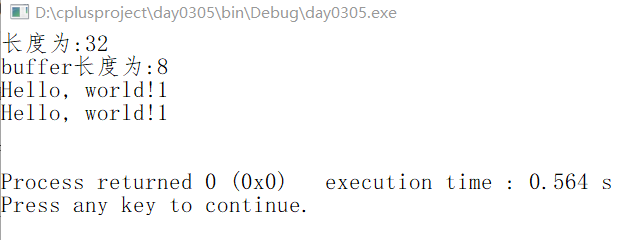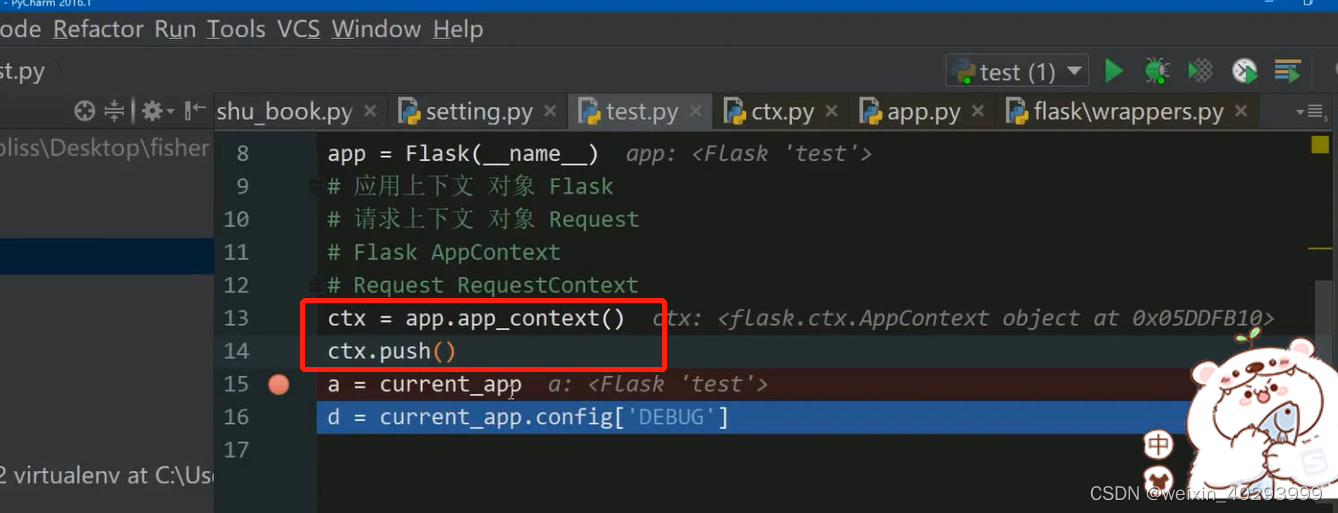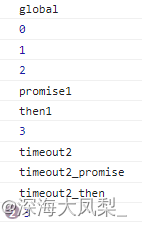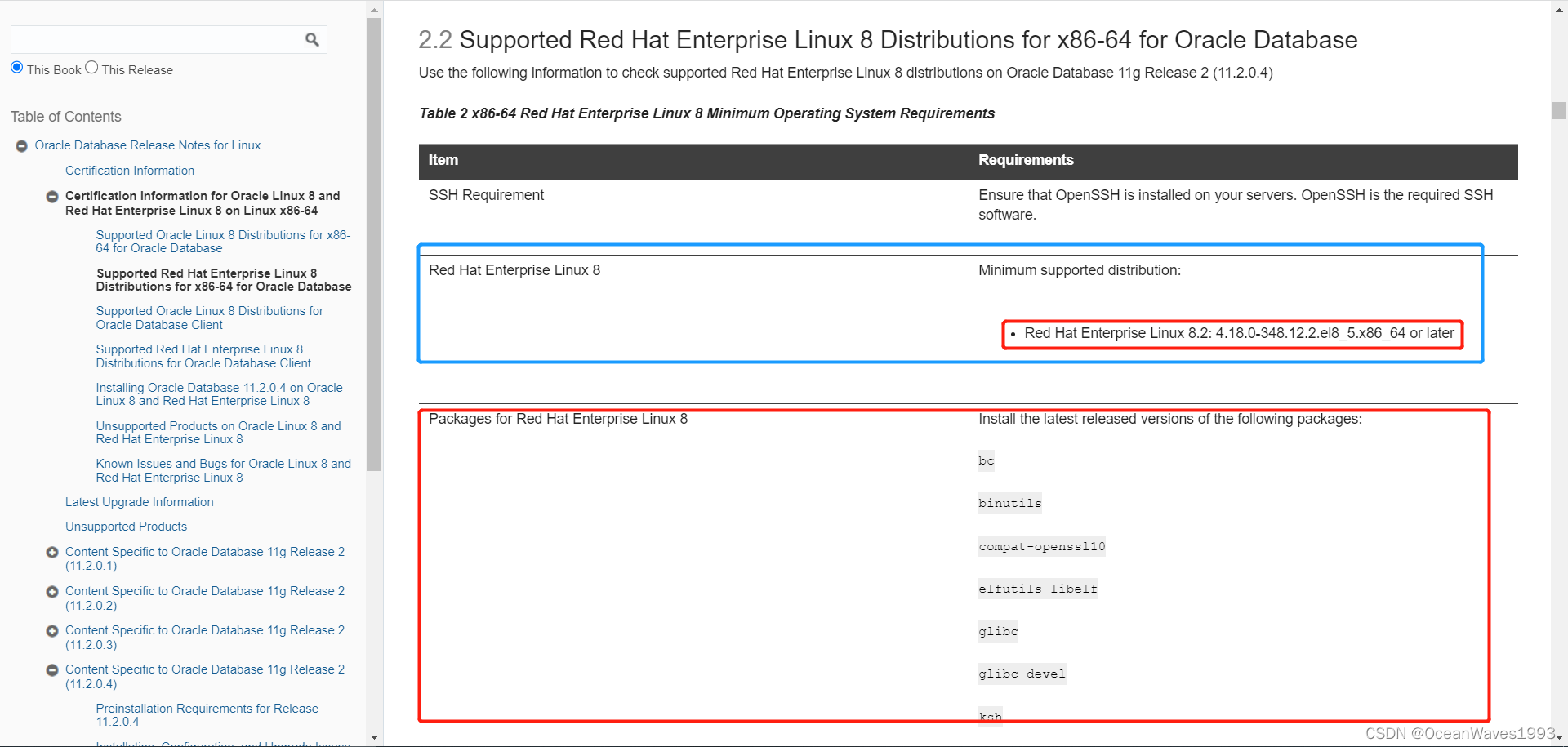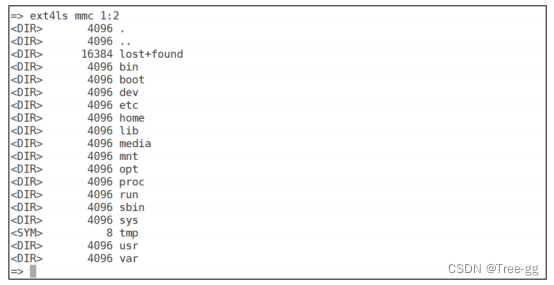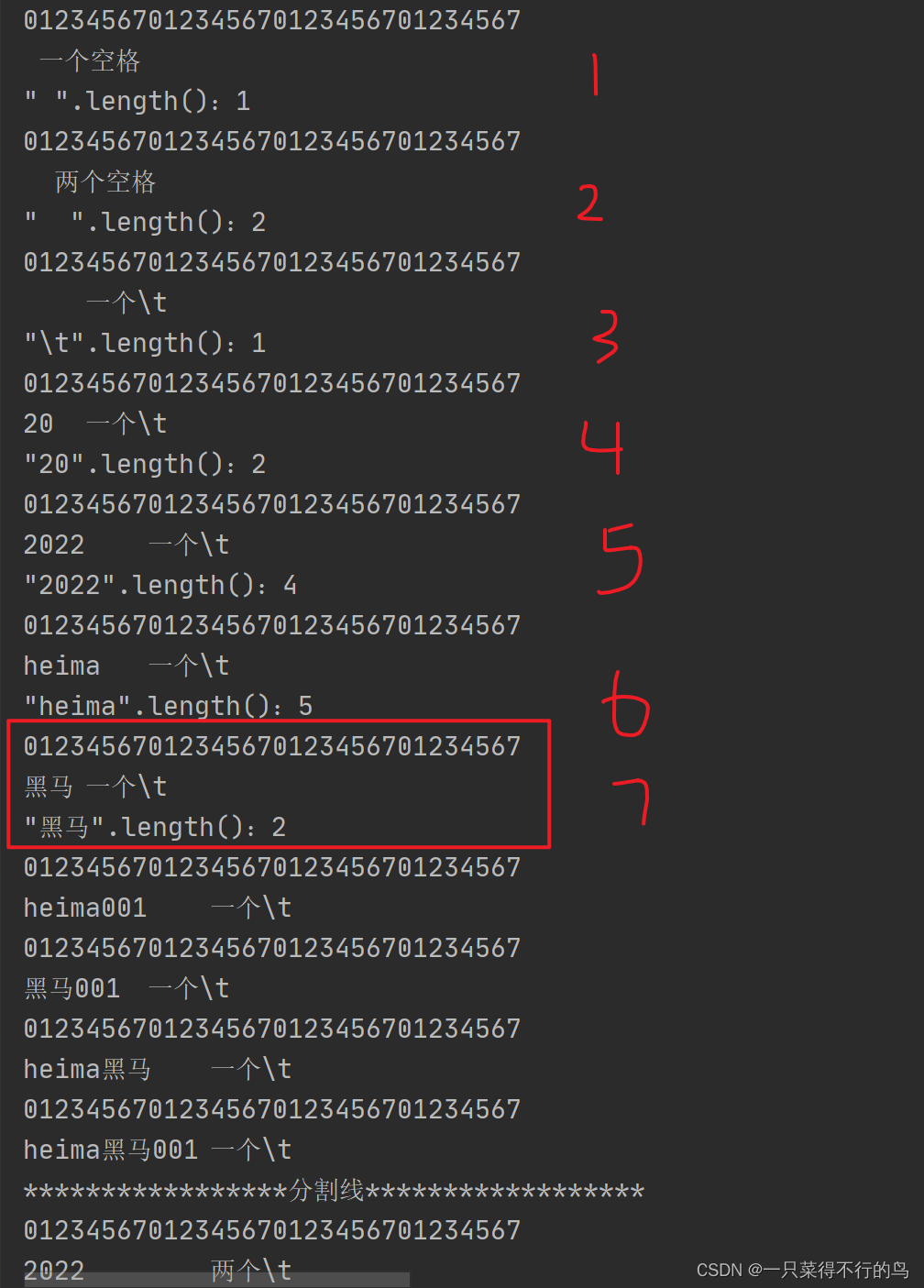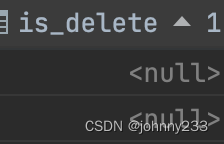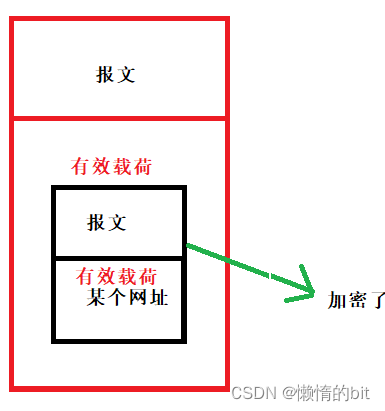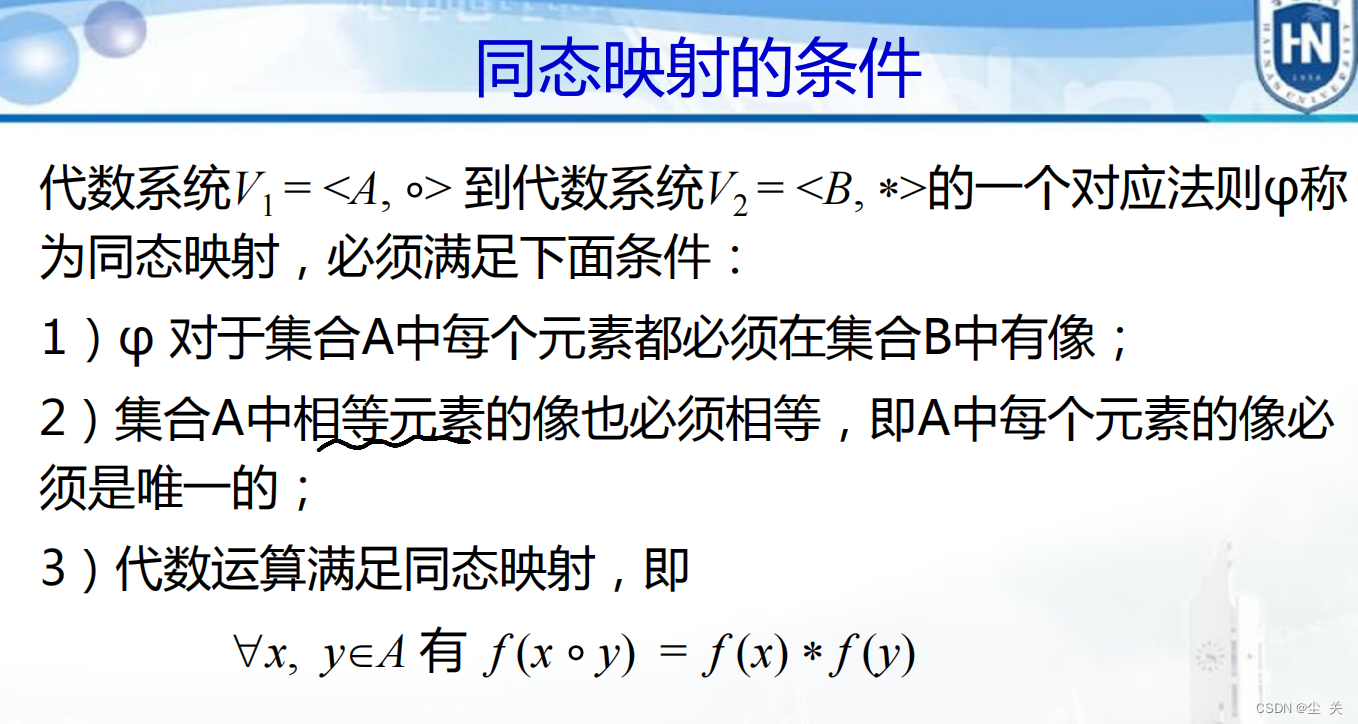一、概述
1.1 概念
Netty是一个异步的基于事件驱动(即多路复用技术)的网络应用框架,用于快速开发可维护、高性能的网络服务器和客户端。
1.2 地位
Netty在Java网络应用框架中的地位就好比,Spring框架在JavaEE开发中的地位。
以下的框架都使用了Netty,因为他们有网络通信需求。
- Cassandra:非关系型数据库
- Spark:大数据分布式计算框架
- Hadoop:大数据分布式存储框架
- RocketMQ:阿里开源的消息队列
- ElasticSearch:搜索引擎
- gRPC:RPC框架
- Dubbo:RPC框架
- Spring 5.x:flux api完全抛弃了tomcat,使用netty作为服务器端
- Zookeeper:分布式协调框架
1.3 优势
- Netty同样是基于java nio开发。如果自己使用nio开发,工作量大,bug 多,这是因为Netty已经做好了基础部分
- 构建协议
- 解决 TCP 传输问题,如粘包、半包
- Linux多路复用的底层是epoll,会存在空轮询导致 CPU 100%(对应nio中Linux下不阻塞),Netty兼容并解决该问题
- 对 API 进行增强,使之更易用,如 ThreadLocal => FastThreadLocal ,ByteBuffer => ByteBuf
- Netty vs 其它网络应用框架
- Mina 由 apache 维护,将来 3.x 版本可能会有较大重构,破坏 API 向下兼容性,Netty 的开发迭代更迅速,API 更简洁、文档更优秀
- 久经考验,Netty 版本
- 2.x 2004
- 3.x 2008
- 4.x 2013
- 5.x 已废弃(使用了AIO,但是Linux的是伪AIO,只有Win真正实现了AIO。实际没有明显的性能提升,却导致维护成本高)
二、入门
2.1 需求
首先需要引入依赖
<dependency>
<groupId>io.netty</groupId>
<artifactId>netty-all</artifactId>
<version>4.1.39.Final</version>
</dependency>
使用Netty开发一个简单的服务器端和客户端
- 客户端向服务器端发送 hello, world
- 服务器仅接收,不返回
2.2 实现
服务端
public class HelloServer {
public static void main(String[] args) {
new ServerBootstrap()//启动器,负责组装netty组件,协调工作
//一个selector和一个thread就叫EventLoop。EventLoopGroup里面,既有Boss处理连接,也有Worker处理读写
.group(new NioEventLoopGroup())
//选择服务器netty的ServerSocketChannel具体实现,有4种自行看源码
.channel(NioServerSocketChannel.class)
.childHandler(//child即Worker,负责读写。决定了Worker能执行哪些操作(Handler)
new ChannelInitializer<NioSocketChannel>() {//代表和客户端进行数据读写的通道,主要负责在initChannel里面添加其他的handler
@Override
protected void initChannel(NioSocketChannel channel) throws Exception {
//添加具体的handler
channel.pipeline().addLast(new StringDecoder());//将netty的ByteBuf转换为字符串
channel.pipeline().addLast(new ChannelInboundHandlerAdapter() {//自定义handler
@Override
public void channelRead(ChannelHandlerContext ctx, Object msg) throws Exception {
//此时这个msg就是上一步StringDecoder解码后的结果
System.out.println(msg);
}
});
}
})
//监听端口
.bind(8080);
}
}
客户端
public class HelloClient {
public static void main(String[] args) throws Exception {
//创建启动器
new Bootstrap()
//添加EventLoop
.group(new NioEventLoopGroup())
//选择客户端channel实现
.channel(NioSocketChannel.class)
//添加处理器,连接建立后该初始化器被调用
.handler(new ChannelInitializer<NioSocketChannel>() {
@Override//在连接建立后(accept)被调用
protected void initChannel(NioSocketChannel channel) throws Exception {
channel.pipeline()
.addLast(new StringEncoder());
}
})
//连接到服务器
.connect("localhost", 8080)
//阻塞方法,直到连接建立
.sync()
//代表着连接对象
.channel()
//向服务器发送数据
.writeAndFlush("hello world");
}
}
针对上述代码对Netty的流程理解
- channel 是数据的通道,与 jdk nio 中 channel 作用一致
- msg 是流动的数据。输入是 ByteBuf ,输出也是 ByteBuf 。但是中间会经过 pipeline 加工,变成其他的类型对象。
- handler是数据的处理工序
- 工序有多道,合在一起就是 pipeline 。 pipeline 负责发布事件(读、读完成等)传播给各个 handler , handler 对自己感兴趣的事件进行处理
- handler分为Inbound(数据输入时走入站handler)和Outbound(数据输出时走出站handler)两类
- eventLoop(底层就是一个线程)是处理数据的工人
- 工人可以管理多个 channel 的 io 操作。并且工人和 channel 针对io操作是绑定的(这也是从线程安全的角度考虑,如果一个 channel 可以被多个线程管理,就会存在多个线程一起读写的情况,防止出问题可能还要做串行操作)
- 工人既可以执行 io 操作,也可以进行任务的处理。每位工人有任务队列,队列里可以存储该工人绑定的多个 channel 的待处理任务,任务分为普通任务、定时任务
- 工人按照 pipeline 顺序,依次按照 handler 的代码处理数据,可以为每道工序指定不同的工人(只适用非io操作)。
三、组件
3.1 EventLoop
EventLoop,事件循环对象
EventLoop 本质是一个单线程执行器(同时维护了一个 Selector),里面有 run 方法处理 Channel 上源源不断的 io 事件。
它的继承关系比较复杂
-
一条线是继承自
java.util.concurrent.ScheduledExecutorService因此包含了线程池中所有的方法 -
另一条线是继承自
io.netty.util.concurrent.OrderedEventExecutor-
提供了 boolean inEventLoop() 方法判断当前执行的线程是否属于此EventLoop
-
提供了 boolean inEventLoop(Thread thread) 方法判断指定线程是否属于此 EventLoop
-
提供了 parent 方法来看看自己属于哪个 EventLoopGroup
-
一般我们不会直接使用EventLoop,而是使用EventLoopGroup
3.2 EventLoopGroup
EventLoopGroup,事件循环组
EventLoopGroup 是一组 EventLoop,Channel 一般会调用 EventLoopGroup 的 register 方法来绑定其中一个 EventLoop,后续这个 Channel 上的 io 事件都由此 EventLoop 来处理(保证了 io 事件处理时的线程安全)
- 继承自
io.netty.util.concurrent.EventExecutorGroup- 实现了 Iterable 接口提供遍历 EventLoop 的能力
- 另有 next 方法获取集合中下一个 EventLoop, next 底层是轮询
使用示例
@Slf4j
public class TestEventLoop {
public static void main(String[] args) {
//1. 创建事件循环组。默认线程数跟下源码, 什么都不配置, 默认是cpu线程*2
NioEventLoopGroup group = new NioEventLoopGroup(2);//可以执行io事件、普通任务、定时任务
//new DefaultEventLoopGroup();//执行普通任务、定时任务
//2. 获取下一个事件循环对象,这个next底层就是轮询
System.out.println(group.next());
System.out.println(group.next());
System.out.println(group.next());
//3. 执行普通任务, 在netty中的意义就是执行一些比较耗时的任务
group.next().execute(() -> {
log.info("普通任务");
});
//4. 执行定时任务。用于keepalive时连接的保活
group.next().scheduleAtFixedRate(() -> {
log.info("定时任务");
}, 0L, 2L, TimeUnit.SECONDS);
}
}
3.2.1 完善2.1
将2.1的需求,进一步完善,代码如下。
服务端
@Slf4j
public class EventLoopServer {
public static void main(String[] args) {
/**
* 细分2: 如果处理io的操作比较耗时, 这时候是不应该让nioEventLoop阻塞在那里,否则会影响后续其他channel的读写
* 所以创建一个独立的EventLoopGroup用来执行那些耗时操作
*/
DefaultEventLoopGroup defaultEventLoopGroup = new DefaultEventLoopGroup(2, new ThreadFactory() {
private final AtomicInteger atomicInteger = new AtomicInteger(0);
@Override
public Thread newThread(Runnable r) {
return new Thread(r, "calc-" + atomicInteger.incrementAndGet());
}
});
new ServerBootstrap()
//.group(new NioEventLoopGroup())
//细分1: netty建议将group划分的更细, 划分为parent和child。parent负责accept, child负责read and write
.group(new NioEventLoopGroup(1, new ThreadFactory() {
private final AtomicInteger atomicInteger = new AtomicInteger(0);
@Override
public Thread newThread(Runnable r) {
return new Thread(r, "boss-" + atomicInteger.incrementAndGet());
}
}), new NioEventLoopGroup(2, new ThreadFactory() {
private final AtomicInteger atomicInteger = new AtomicInteger(0);
@Override
public Thread newThread(Runnable r) {
return new Thread(r, "worker-" + atomicInteger.incrementAndGet());
}
}))
.channel(NioServerSocketChannel.class)
.childHandler(new ChannelInitializer<NioSocketChannel>() {
@Override
protected void initChannel(NioSocketChannel ch) throws Exception {
ch.pipeline()
.addLast("handler1", new ChannelInboundHandlerAdapter() {
@Override//没有编解码,那就是ByteBuf
public void channelRead(ChannelHandlerContext ctx, Object msg) throws Exception {
ByteBuf buf = (ByteBuf) msg;
log.info(buf.toString(Charset.defaultCharset()) + "_" + ctx.channel().remoteAddress());
ctx.fireChannelRead(msg);//将消息传递给下一个handler
//上行做法,通过直接调用父级该方法,一样可以实现往下传递
//super.channelRead(ctx, msg);
}
})
.addLast(defaultEventLoopGroup, "handler2", new ChannelInboundHandlerAdapter() {
@Override
public void channelRead(ChannelHandlerContext ctx, Object msg) throws Exception {
ByteBuf buf = (ByteBuf) msg;
TimeUnit.SECONDS.sleep(2L);
log.info(buf.toString(Charset.defaultCharset()) + "_" + ctx.channel().remoteAddress());
}
});
}
})
.bind(8080);
}
}
客户端
public class EventLoopClient {
public static void main(String[] args) throws Exception {
ChannelFuture future = new Bootstrap()//创建启动器
//添加EventLoop
.group(new NioEventLoopGroup())
//选择客户端channel实现
.channel(NioSocketChannel.class)
//添加处理器,连接建立后该初始化器被调用
.handler(new ChannelInitializer<NioSocketChannel>() {
@Override//在连接建立后(accept)被调用
protected void initChannel(NioSocketChannel channel) throws Exception {
channel.pipeline()
.addLast(new StringEncoder());
}
})
//连接到服务器
.connect("localhost", 8080);
Channel channel = future
//阻塞方法,直到连接建立
.sync()
.channel();//代表着连接对象
while (true) {
System.in.read();
channel.writeAndFlush("hello world");
//channel.write("hello world");
}
}
}
建立三个Client,每个Client发送一次消息。运行结果如图

由上图可知,channel第一次创建时,就与线程绑定了,不管是处理读写的worker,还是处理耗时的calc,都是绑定的。

h1与h2对应服务端的handler1与handler2
至于head与tail,后面的会提到
3.2.2 切换线程原理
查看源码io.netty.channel.AbstractChannelHandlerContext中的invokeChannelRead
static void invokeChannelRead(final AbstractChannelHandlerContext next, Object msg) {
final Object m = next.pipeline.touch(ObjectUtil.checkNotNull(msg, "msg"), next);
// 返回下一个handler的eventLoop,这里是使用了多态的写法
EventExecutor executor = next.executor();
//判断当前handler的线程,是否和下一个handler的eventLoop是同一个线程
//如果是,直接调用;否则, 将要处理的消息提交给下一个eventLoop
if (executor.inEventLoop()) {
next.invokeChannelRead(m);
} else {
executor.execute(new Runnable() {
@Override
public void run() {
next.invokeChannelRead(m);
}
});
}
}
3.3 Channel
channel 的主要作用
- close() 可以用来异步关闭 channel
- closeFuture() 用来执行 channel 关闭后的善后操作
- sync 方法作用是同步等待 channel 关闭
- 而 addListener 方法是异步等待 channel 关闭
- pipeline() 方法添加处理器
- write() 方法将数据写到缓冲区,但并不是立即写出
- 可以直接将3.2.1的代码,修改成write方法,尝试即可
- writeAndFlush() 方法立即将数据写出
3.3.1 ChannelFuture
保证获取到的channel是成功连接后的,两种方式
- sync 阻塞,本线程阻塞,直到channel成功建立连接
- addListener(回调对象) 添加回调,其他线程执行,channel监听到连接成功后执行回调对象
服务端代码保持不变,客户端代码修改
@Slf4j
public class EventLoopClient {
public static void main(String[] args) throws Exception {
//带有Future、Promise的都是和异步方法配套使用,目的是提高效率且正确处理结果
ChannelFuture future = new Bootstrap()//创建启动器
//添加EventLoop
.group(new NioEventLoopGroup())
//选择客户端channel实现
.channel(NioSocketChannel.class)
//添加处理器,连接建立后该初始化器被调用
.handler(new ChannelInitializer<NioSocketChannel>() {
@Override//在连接建立后(accept)被调用
protected void initChannel(NioSocketChannel channel) throws Exception {
channel.pipeline()
.addLast(new StringEncoder());
}
})
//连接到服务器
/**
* 异步非阻塞
* 异步:我(当前线程)只负责发起连接,至于连接后的结果,让别人(NioEventLoopGroup中线程)取
* 非阻塞:不等待直接下一步
*/
.connect("localhost", 8080);
//方法一:使用sync阻塞方法,直到连接建立
//future.sync();
//直接获取channel,其实获取到的是个尚未连接的channel
//Channel channel = future.channel();//代表着连接对象
//for (int i = 0; i < 2; i++) {
// if (channel.isActive()) {
// log.info("已连接");
// channel.writeAndFlush("hello world");
// } else {
// log.info("未连接");
// }
// TimeUnit.SECONDS.sleep(1);
//}
//方法二:使用addListener(回调对象)方法异步处理结果
future.addListener(new ChannelFutureListener() {
@Override//在nio线程连接建立好之后,会调用operationComplete
public void operationComplete(ChannelFuture future) throws Exception {
Channel channel = future.channel();
for (int i = 0; i < 2; i++) {
if (channel.isActive()) {
log.info("已连接");
channel.writeAndFlush("hello world");
} else {
log.info("未连接");
}
TimeUnit.SECONDS.sleep(1);
}
}
});
}
}
3.3.2 CloseFuture
Channel通过 closeFuture() 来进行善后操作
- sync 方法作用是同步等待 channel 关闭
- 而 addListener 方法是异步等待 channel 关闭
@Slf4j
public class CloseFutureClient {
public static void main(String[] args) throws Exception {
NioEventLoopGroup group = new NioEventLoopGroup();
ChannelFuture future = new Bootstrap()
.group(group)
.channel(NioSocketChannel.class)
.handler(new ChannelInitializer<NioSocketChannel>() {
@Override
protected void initChannel(NioSocketChannel ch) throws Exception {
ch.pipeline()
.addLast(new LoggingHandler(LogLevel.DEBUG))
.addLast(new StringEncoder());
}
})
.connect("localhost", 8080);
Channel channel = future.sync().channel();
new Thread(() -> {
Scanner scanner = new Scanner(System.in);
while (true) {
String line = scanner.nextLine();
if ("q".equals(line)) {
//close是个异步方法, 通过添加LoggingHandler可以监视关闭的线程
channel.close();
log.info("调用close方法");
break;
}
channel.writeAndFlush(line);
}
}, "input").start();
//方式一:sync
//ChannelFuture closeFuture = channel.closeFuture();
//closeFuture.sync();
//log.info("成功关闭");
//group.shutdownGracefully();
//方式二:监听
channel.closeFuture().addListener(new ChannelFutureListener() {
@Override
public void operationComplete(ChannelFuture future) throws Exception {
log.info("成功关闭后的回调");
group.shutdownGracefully();
}
});
}
}


Netty可以通过LoggingHandler打印日志,直观的查看Channel连接、收发、断开的过程
3.3.3 为何异步
疑问:为什么不在一个线程中去执行建立连接、去执行关闭 channel,那样不是也可以吗?非要用这么复杂的异步方式:比如一个线程发起建立连接,另一个线程去真正建立连接;一个线程去关闭连接,另一个线程真正去关闭连接。
这个问题也很简单,就比如多路复用的做法。我只有4个线程来发起长连接,如果一线程一长连接那种,撑死只能建立4个长连接。但是使用多路复用技术,就能处理更多的长连接了。这也就是Netty异步的核心思想了。
3.4 Future&&Promise
3.4.1 比较
在异步处理时,经常用到这 Future Promise 两个接口

首先要说明 netty 中的 Future 与 jdk 中的 Future 同名,但是是两个接口,netty 的 Future 继承自 jdk 的 Future,而 Promise 又对 netty Future 进行了扩展
- jdk Future 只能同步等待任务结束(或成功、或失败)才能得到结果。比如get方法,就是只能同步等待获取结果。
- netty Future 可以同步等待任务结束得到结果,也可以异步方式得到结果(比如CloseFuture的addListener),但都是要等任务结束
- netty Promise 不仅有 netty Future 的功能,而且脱离了任务独立存在,只作为两个线程间传递结果的容器
| 功能/名称 | jdk Future | netty Future | Promise |
|---|---|---|---|
| cancel | 取消任务 | - | - |
| isCanceled | 任务是否取消 | - | - |
| isDone | 任务是否完成,不能区分成功失败 | - | - |
| get | 获取任务结果,阻塞等待 | - | - |
| getNow | - | 获取任务结果,非阻塞,还未产生结果时返回 null | - |
| await | - | 等待任务结束,如果任务失败,不会抛异常,而是通过 isSuccess 判断 | - |
| sync | - | 等待任务结束,如果任务失败,抛出异常 | - |
| isSuccess | - | 判断任务是否成功 | - |
| cause | - | 获取失败信息,非阻塞,如果没有失败,返回null | - |
| addLinstener | - | 添加回调,异步接收结果 | - |
| setSuccess | - | - | 设置成功结果 |
| setFailure | - | - | 设置失败结果 |
3.4.2 示例
jdk Future
@Slf4j
public class TestJDKFuture {
public static void main(String[] args) throws Exception {
ExecutorService executorService = Executors.newFixedThreadPool(2);
Future<Integer> future = executorService.submit(new Callable<Integer>() {
@Override
public Integer call() throws Exception {
log.info("calc..");
TimeUnit.SECONDS.sleep(2);
return ThreadLocalRandom.current().nextInt(1, 10);
}
});
log.info("waiting..");
Integer integer = future.get();
log.info("received..{}", integer);
}
}
netty Future
@Slf4j
public class TestNettyFuture {
public static void main(String[] args) throws Exception {
NioEventLoopGroup group = new NioEventLoopGroup(1);
EventLoop eventLoop = group.next();
Future<Integer> future = eventLoop.submit(new Callable<Integer>() {
@Override
public Integer call() throws Exception {
log.info("calc..");
TimeUnit.SECONDS.sleep(2);
return ThreadLocalRandom.current().nextInt(1, 10);
}
});
//方式一:同步方式
//log.info("waiting..");
//Integer integer = future.get();
//log.info("received..{}", integer);
//方式二:异步方式
future.addListener(new GenericFutureListener<Future<Integer>>() {
@Override
public void operationComplete(Future<Integer> future) throws Exception {
log.info("waiting..");
Integer integer = future.getNow();
log.info("received..{}", integer);
}
});
}
}
netty Promise
@Slf4j
public class TestNettyPromise {
public static void main(String[] args) throws Exception {
EventLoop eventLoop = new NioEventLoopGroup(1).next();
//与future不同的是,可以主动创建promise对象。而不用像future一样通过提交任务获取对象。
//结果容器
Promise<Integer> promise = new DefaultPromise<>(eventLoop);
new Thread(() -> {
log.info("calc..");
try {
TimeUnit.SECONDS.sleep(2L);
//int i = 2 / 0;
//线程执行完毕后,向promise填充结果
promise.setSuccess(ThreadLocalRandom.current().nextInt(1, 10));
} catch (InterruptedException e) {
e.printStackTrace();
promise.setFailure(e);
}
}).start();
//接收结果
log.info("waiting..");
Integer integer = promise.get();
log.info("received..{}", integer);
}
}
3.5 Handler&&Pipeline
3.5.1 Handler在Pipeline中执行顺序
ChannelHandler 用来处理 Channel 上的各种事件,分为入站、出站两种。所有 ChannelHandler 被连成一串,就是 Pipeline
- 入站处理器通常是 ChannelInboundHandlerAdapter 的子类,主要用来读取客户端数据、写回结果
- 出站处理器通常是 ChannelOutboundHandlerAdapter 的子类,主要对写回结果进行加工
打个比喻,每个 Channel 是一个产品的加工车间,Pipeline 是车间中的流水线,ChannelHandler 就是流水线上的各道工序,而后面要讲的 ByteBuf 是原材料,经过很多工序的加工:先经过一道道入站工序,再经过一道道出站工序最终变成产品
@Slf4j
public class TestPipeline {
public static void main(String[] args) {
new ServerBootstrap()
.group(new NioEventLoopGroup())
.channel(NioServerSocketChannel.class)
.childHandler(new ChannelInitializer<NioSocketChannel>() {
@Override
protected void initChannel(NioSocketChannel ch) throws Exception {
//通过channel拿到pipeline
ChannelPipeline pipeline = ch.pipeline();
//添加处理器。netty会自动添加两个handler分别为head和tail
//addLast并不是加到最后,而是加到tail之前
//channel的执行流程:head->In_1->In_2->In_3->Out_4->Out_5->Out_6->tail
pipeline.addLast("In_1", new ChannelInboundHandlerAdapter() {
@Override
public void channelRead(ChannelHandlerContext ctx, Object msg) throws Exception {
log.info("In_1");
super.channelRead(ctx, msg);//唤醒下一个入站处理器
}
});
pipeline.addLast("In_2", new ChannelInboundHandlerAdapter() {
@Override
public void channelRead(ChannelHandlerContext ctx, Object msg) throws Exception {
log.info("In_2");
super.channelRead(ctx, msg);//唤醒下一个入站处理器
}
});
pipeline.addLast("In_3", new ChannelInboundHandlerAdapter() {
@Override
public void channelRead(ChannelHandlerContext ctx, Object msg) throws Exception {
log.info("In_3");
super.channelRead(ctx, msg);//唤醒下一个入站处理器。此处已经结尾了,所以无所谓。
//ctx.writeAndFlush("hello world");//表示从当前处理器往前找 写出 处理器
ctx.channel().writeAndFlush("hello world");//表示从channel的tail往前找 写出 处理器
}
});
pipeline.addLast("Out_4", new ChannelOutboundHandlerAdapter() {
@Override
public void write(ChannelHandlerContext ctx, Object msg, ChannelPromise promise) throws Exception {
log.info("Out_4");
super.write(ctx, msg, promise);
}
});
pipeline.addLast("Out_5", new ChannelOutboundHandlerAdapter() {
@Override
public void write(ChannelHandlerContext ctx, Object msg, ChannelPromise promise) throws Exception {
log.info("Out_5");
super.write(ctx, msg, promise);
}
});
pipeline.addLast("Out_6", new ChannelOutboundHandlerAdapter() {
@Override
public void write(ChannelHandlerContext ctx, Object msg, ChannelPromise promise) throws Exception {
log.info("Out_6");
super.write(ctx, msg, promise);
}
});
}
})
.bind(8080);
}
}
@Slf4j
class TestPipelineClient {
public static void main(String[] args) throws Exception {
Channel channel = new Bootstrap()
.group(new NioEventLoopGroup())
.channel(NioSocketChannel.class)
.handler(new ChannelInitializer<NioSocketChannel>() {
@Override
protected void initChannel(NioSocketChannel ch) throws Exception {
ch.pipeline()
.addLast(new StringEncoder())
.addLast(new StringDecoder())
.addLast(new ChannelInboundHandlerAdapter() {
@Override
public void channelRead(ChannelHandlerContext ctx, Object msg) throws Exception {
log.info("received==>{}", msg);
}
})
.addLast(new ChannelOutboundHandlerAdapter() {
@Override
public void write(ChannelHandlerContext ctx, Object msg, ChannelPromise promise) throws Exception {
log.info("writed==>{}", msg);
super.write(ctx, msg, promise);
}
});
}
})
.connect("localhost", 8080)
.sync().channel();
while (true) {
System.in.read();
channel.writeAndFlush("hello world");
}
}
}

可以看到,ChannelInboundHandlerAdapter 是按照 addLast 的顺序执行的,而 ChannelOutboundHandlerAdapter 是按照 addLast 的逆序执行的。
ChannelPipeline 的实现是一个 ChannelHandlerContext(包装了 ChannelHandler) 组成的双向链表

3.5.2 更方便地测试Handler执行顺序
@Slf4j
public class TestEmbeddedChannel {
public static void main(String[] args) {
ChannelInboundHandlerAdapter h1 = new ChannelInboundHandlerAdapter() {
@Override
public void channelRead(ChannelHandlerContext ctx, Object msg) throws Exception {
log.info("h1");
super.channelRead(ctx, msg);
}
};
ChannelInboundHandlerAdapter h2 = new ChannelInboundHandlerAdapter() {
@Override
public void channelRead(ChannelHandlerContext ctx, Object msg) throws Exception {
log.info("h2");
super.channelRead(ctx, msg);
}
};
ChannelOutboundHandlerAdapter h3 = new ChannelOutboundHandlerAdapter() {
@Override
public void write(ChannelHandlerContext ctx, Object msg, ChannelPromise promise) throws Exception {
log.info("h3");
super.write(ctx, msg, promise);
}
};
ChannelOutboundHandlerAdapter h4 = new ChannelOutboundHandlerAdapter() {
@Override
public void write(ChannelHandlerContext ctx, Object msg, ChannelPromise promise) throws Exception {
log.info("h4");
super.write(ctx, msg, promise);
}
};
EmbeddedChannel embeddedChannel = new EmbeddedChannel(h1, h2, h3, h4);
//测试入站
log.info("测试入站");
embeddedChannel.writeInbound("inbound");
Object o = embeddedChannel.readInbound();
log.info("测试出站");
embeddedChannel.writeOutbound("outbound");
Object o1 = embeddedChannel.readOutbound();
}
}

3.6 ByteBuf
3.6.1 优势
io.netty.buffer.ByteBuf是对java.nio.ByteBuffer的增强。
- 支持动态扩容。最大容量不超过Integer最大值。
- 池化思想。对直接内存影响最大,保证享受了直接内存的高读写的同时,又能有效避免重复开辟内存造成的性能损失。
- 读写指针分离。内部使用两套指针,标识读和写。与ByteBuffer相比,就能减少不必要的来回切换。
- 零拷贝。比如slice/duplicate/compositeByteBuf
- 方便开发者高效编写。比如链式调用。
3.6.2 组成
ByteBuf 由四部分组成
- 废弃字节
- 可读字节
- 可写字节
- 可扩容字节

该组成结构,使得ByteBuf在使用上,比ByteBuffer(如下图所示)方便许多,因为节省了人为频繁切换指针位置的操作。

3.6.3 使用
池化 VS 非池化
池化的最大意义在于可以重用 ByteBuf,优点有
- 没有池化,则每次都得创建新的 ByteBuf 实例,这个操作对直接内存代价昂贵,就算是堆内存,也会增加 GC 压力
- 有了池化,则可以重用池中 ByteBuf 实例,并且采用了与 jemalloc 类似的内存分配算法提升分配效率
- 高并发时,池化功能更节约内存,减少内存溢出的可能
池化功能是否开启,可以通过下面的系统环境变量来设置
-Dio.netty.allocator.type={unpooled|pooled}
- 4.1 以后,非 Android 平台默认启用池化实现,Android 平台启用非池化实现
- 4.1 之前,池化功能还不成熟,默认是非池化实现

直接内存 VS 堆内存
可以使用下面的代码来创建池化基于堆内存的 ByteBuf
ByteBuf buffer = ByteBufAllocator.DEFAULT.heapBuffer(10);
也可以使用下面的代码来创建池化基于直接内存的 ByteBuf
ByteBuf buffer = ByteBufAllocator.DEFAULT.directBuffer(10);
直接内存 与 堆内存 的比较
- 直接内存创建和销毁的代价昂贵,但读写性能高(少一次内存复制),适合配合池化功能一起用
- 直接内存对 GC 压力小,因为这部分内存不受 JVM 垃圾回收的管理,但也要注意及时主动释放
调试工具类
首先创建一个调试工具类
import io.netty.buffer.ByteBuf;
import static io.netty.buffer.ByteBufUtil.appendPrettyHexDump;
import static io.netty.util.internal.StringUtil.NEWLINE;
public class DebugByteBuf {
public static void log(ByteBuf buffer) {
log(buffer, false);
}
public static void log(ByteBuf buffer, boolean pretty) {
int length = buffer.readableBytes();
int rows = length / 16 + (length % 15 == 0 ? 0 : 1) + 4;
StringBuilder buf = new StringBuilder(rows * 80 * 2)
.append("read index:").append(buffer.readerIndex())
.append(" write index:").append(buffer.writerIndex())
.append(" capacity:").append(buffer.capacity())
.append(NEWLINE);
if (pretty) {
appendPrettyHexDump(buf, buffer);
}
System.out.println(buf.toString());
}
}
创建
ByteBuf能自动扩容,初始值256,最大值为Integer最大范围
public class TestByteBuf {
public static void main(String[] args) {
//创建ByteBuf, 默认创建大小256个字节的,最大为Integer最大值
ByteBuf buffer = ByteBufAllocator.DEFAULT.buffer();
System.out.println(buffer.getClass());
DebugByteBuf.log(buffer);//初始256
StringBuilder sb = new StringBuilder();
for (int i = 0; i < 300; i++) {
sb.append("a");
}
buffer.writeBytes(sb.toString().getBytes(StandardCharsets.UTF_8));
DebugByteBuf.log(buffer);//由于超过了容量256,自动扩容到512
}
}

写入
大小端存储
Big Endian(大端存储)和Little Endian(小端存储)是两种不同的字节存储方式,用于表示一个多字节数据类型在内存中的存储顺序。
不要将字节与位的关系混淆。
计算机中用来表示内存储器容量大小的基本单位是字节(Byte),此处是讲多字节数据类型的存储顺序。
Big Endian(大端存储)是指内存的低地址,存储高位字节。
Little Endian(小端存储)是指内存的低地址,存储低位字节。

操作系统都采用小端存储模式
通讯协议则采用大端存储模式
测试大小端存储时顺序
public class DebugEndian {
public static void debug(long num) {
// 将 long 变量转换为大端顺序的字节数组
byte[] bigEndian = ByteBuffer.allocate(Long.BYTES).order(ByteOrder.BIG_ENDIAN).putLong(num).array();
// 将 long 变量转换为小端顺序的字节数组
byte[] littleEndian = ByteBuffer.allocate(Long.BYTES).order(ByteOrder.LITTLE_ENDIAN).putLong(num).array();
// 打印大端和小端字节数组
System.out.println("Big-endian dec: " + Arrays.toString(bigEndian));
System.out.println("Little-endian dec: " + Arrays.toString(littleEndian));
String[] bigEndianHex = new String[bigEndian.length];
for (int i = 0; i < bigEndian.length; i++) {
bigEndianHex[i] = Integer.toHexString(bigEndian[i]);
}
String[] littleEndianHex = new String[littleEndian.length];
for (int i = 0; i < bigEndian.length; i++) {
littleEndianHex[i] = Integer.toHexString(littleEndian[i]);
}
System.out.println("Big-endian hex: " + Arrays.toString(bigEndianHex));
System.out.println("Little-endian hex: " + Arrays.toString(littleEndianHex));
}
public static void main(String[] args) {
// 声明一个值为 0x112345678 的 long 变量
//long num = 0x112345678L;
long num = 0x250L;
debug(num);
}
}

方法列表
方法列表,省略一些不重要的方法
| 方法 | 含义 | 备注 |
|---|---|---|
| writeBoolean(boolean value) | 写入 boolean 值,占1字节 | 非零为真 |
| writeByte(int value) | 写入 byte 值,占1字节 | |
| writeShort(int value) | 写入 short 值,占2字节 | |
| writeInt(int value) | 写入 int 值,占4字节 | Big Endian(大端写入),如 250,写入后16进制表示 00 00 00 fa |
| writeIntLE(int value) | 写入 int 值,占4字节 | Little Endian(小端写入),如 250,写入后16进制表示 fa 00 00 00 |
| writeLong(long value) | 写入 long 值,占8字节 | |
| writeChar(int value) | 写入 char 值,占2字节 | |
| writeFloat(float value) | 写入 float 值,占4字节 | |
| writeDouble(double value) | 写入 double 值,占8字节 | |
| writeBytes(ByteBuf src) | 写入 netty 的 ByteBuf | |
| writeBytes(byte[] src) | 写入 byte[] | |
| writeBytes(ByteBuffer src) | 写入 nio 的 ByteBuffer | |
| int writeCharSequence(CharSequence sequence, Charset charset) | 写入字符串 |
注意
- 这些方法的未指明返回值的,其返回值都是 ByteBuf,意味着可以链式调用
- 网络传输,默认习惯是 Big Endian (大端存储)
- CharSequence 是个接口,像 String/StringBuilder 都实现该接口
扩容
public class TestByteBufWrite {
public static void main(String[] args) {
ByteBuf buffer = ByteBufAllocator.DEFAULT.buffer(3);
buffer.writeBytes(new byte[]{1,2});
DebugByteBuf.log(buffer,true);
buffer.writeInt(250);
DebugByteBuf.log(buffer,true);
buffer.writeIntLE(250);
DebugByteBuf.log(buffer,true);
}
}

由上图,可验证大小端存储相关知识。
不过由上图,也发现进行了自动扩容, ByteBuf 的扩容规则是
- 若容量小于16,则扩容后16
- 若容量大于16小于64,则扩容后64
- 若容量大于64,则每次扩容为当前容量的2倍
- 扩容不能超过 max capacity 会报错
读取
方法列表
| 方法名 | 含义 | 备注 |
|---|---|---|
| int readByte() | 读取一个字节 | 会向后移动读指针 |
| ByteBuf markReaderIndex() | 将当前位置定义为读标记。默认是0 | |
| ByteBuf resetReaderIndex() | 重置到读标记 | |
| getXXX | 读取 | 不会改变读指针 |
3.6.4 内存释放
释放原理
由于 Netty 中有多种内存的 ByteBuf 实现,因此要灵活处理
- UnpooledHeapByteBuf 使用的是 JVM 内存,只需等 GC 回收内存即可
- UnpooledDirectByteBuf 使用的就是直接内存了,需要特殊的方法来回收内存,手动释放
- PooledByteBuf 和它的子类使用了池化机制,需要更复杂的规则来回收内存,手动释放还给内存池
不过,Netty 为了方便开发者手动释放内存,采用了引用计数法来控制回收内存,每个 ByteBuf 都实现了 io.netty.util.ReferenceCounted 接口
- 每个 ByteBuf 对象初始后,计数为 1
- 调用 release 方法计数减 1,如果计数为 0,ByteBuf 内存被回收
- 调用 retain 方法计数加 1,表示调用者没用完之前,其它 handler 即使调用了 release 也不会造成回收
- 当计数为 0 时,底层内存会被回收,这时即使 ByteBuf 对象还在,其各个方法均无法正常使用
计数为0后的释放逻辑,在io.netty.buffer.AbstractReferenceCountedByteBuf#deallocate方法中
谁来负责 release 呢?
不是我们想象的(一般情况下)
ByteBuf buf = ...
try {
...
} finally {
buf.release();
}
请思考,因为 pipeline 的存在,一般需要将 ByteBuf 传递给下一个 ChannelHandler,如果在 finally 中 release 了,就失去了传递性(当然,如果在这个 ChannelHandler 内这个 ByteBuf 已完成了它的使命,那么便无须再传递)
基本规则是,谁是最后使用者,谁负责 release。

在pipeline中,head与tail两个处理器可以自动做收尾工作
- 入站msg,tail 对 ByteBuf 进行释放
- 出站msg,head 对 ByteBuf 进行释放
开发者不能完全依赖head与tail
如果用户在某个handler中,并没有将ByteBuf往后面的处理器传,这时候,收尾的head与tail就失去了作用,因为你根本没把资源传递给我,我咋释放啊
tail源码
tail只处理入站,写出都是通过outHandler执行的,所以跟tail也没啥关系。因此代码中也只实现入站处理器。
final class TailContext extends AbstractChannelHandlerContext
implements ChannelInboundHandler {}
查看io.netty.channel.DefaultChannelPipeline.TailContext#channelRead方法,往下跟,找到如下代码
protected void onUnhandledInboundMessage(Object msg) {
try {
logger.debug(
"Discarded inbound message {} that reached at the tail of the pipeline. " +
"Please check your pipeline configuration.", msg);
} finally {
ReferenceCountUtil.release(msg);
}
}
//ReferenceCountUtil
public static boolean release(Object msg) {
if (msg instanceof ReferenceCounted) {
return ((ReferenceCounted) msg).release();
}
return false;
}
head源码
head既处理入站,也处理出站,因此两个处理器都实现
final class HeadContext extends AbstractChannelHandlerContext
implements ChannelOutboundHandler, ChannelInboundHandler{}
查看io.netty.channel.DefaultChannelPipeline.HeadContext#write方法,往下跟,找到如下代码
public final void write(Object msg, ChannelPromise promise) {
assertEventLoop();
ChannelOutboundBuffer outboundBuffer = this.outboundBuffer;
if (outboundBuffer == null) {
// If the outboundBuffer is null we know the channel was closed and so
// need to fail the future right away. If it is not null the handling of the rest
// will be done in flush0()
// See https://github.com/netty/netty/issues/2362
safeSetFailure(promise, newClosedChannelException(initialCloseCause));
// release message now to prevent resource-leak
ReferenceCountUtil.release(msg);
return;
}
int size;
try {
msg = filterOutboundMessage(msg);
size = pipeline.estimatorHandle().size(msg);
if (size < 0) {
size = 0;
}
} catch (Throwable t) {
safeSetFailure(promise, t);
ReferenceCountUtil.release(msg);
return;
}
outboundBuffer.addMessage(msg, size, promise);
}
3.6.5 深拷贝
会将底层内存数据进行深拷贝,因此无论读写,都与原始 ByteBuf 无关
public class TestCopy {
public static void main(String[] args) {
ByteBuf buf1 = ByteBufAllocator.DEFAULT.buffer(5);
buf1.writeBytes(new byte[]{
1, 2, 3, 4, 5
});
ByteBuf buf2 = buf1.copy();
//验证深拷贝
buf2.setByte(0, 10);
log(buf1, true);
log(buf2, true);
}
}

3.6.6 零拷贝
零拷贝不进行内存复制,使用原有内存,其相关应用分为两大类
- 分
- slice
- duplicate
- 合
- composite
切片slice
【零拷贝】的体现之一,对原始 ByteBuf 进行切片成多个 ByteBuf,切片后的 ByteBuf 并没有发生内存复制,还是使用原始 ByteBuf 的内存,切片后的 ByteBuf 维护独立的 read 和 write 指针
注意:
切片后的ByteBuf底层是SlicedByteBuf,再写内容,对原始数据有影响,因此,SlicedByteBuf禁止写入。
同样地,原内容发生变化,SlicedByteBuf也受到影响
所以,实际编写代码时,需要添加引用和手动释放

验证并没有发生数据复制
public class TestSlice {
public static void main(String[] args) {
ByteBuf buf = ByteBufAllocator.DEFAULT.buffer(10);
buf.writeBytes(new byte[]{
1, 2, 3, 4, 5, 6, 7, 8, 9, 10
});
log(buf, true);
//在切片过程中,并未发生数据复制
ByteBuf buf1 = buf.slice(0, 3);
buf1.retain();//引用一次
ByteBuf buf2 = buf.slice(3, 3);
buf2.retain();
ByteBuf buf3 = buf.slice(6, 4);
buf3.retain();
log(buf1, true);
log(buf2, true);
log(buf3, true);
//使用如下代码,验证并没有进行数据复制
//注意toString中的hashCode并非表示地址值,只是哈希值而已
buf1.setByte(0, 10);
log(buf1, true);
log(buf, true);
System.out.println("引用次数"+buf.refCnt());//4
}
}

浅拷贝duplicate
【零拷贝】的体现之一,就好比截取了原始 ByteBuf 所有内容,并且没有 max capacity 的限制,也是与原始 ByteBuf 使用同一块底层内存,只是读写指针是独立的

实际编写代码时,需要添加引用和手动释放
组合compositeBuffer
【零拷贝】的体现之一,可以将多个 ByteBuf 合并为一个逻辑上的 ByteBuf,避免拷贝
public class TestComposite {
public static void main(String[] args) {
ByteBuf buf1 = ByteBufAllocator.DEFAULT.buffer(5);
buf1.writeBytes(new byte[]{
1, 2, 3, 4, 5
});
ByteBuf buf2 = ByteBufAllocator.DEFAULT.buffer(5);
buf2.writeBytes(new byte[]{
6, 7, 8, 9, 10
});
发生数据复制的合并
//ByteBuf buf = ByteBufAllocator.DEFAULT.buffer(10);
//buf.writeBytes(buf1).writeBytes(buf2);
//log(buf, true);
//不发生数据复制的合并
CompositeByteBuf buf = ByteBufAllocator.DEFAULT.compositeBuffer(10);
buf.addComponents(true, buf1, buf2);
buf1.retain();//添加引用,防止buf1和buf2被释放
buf2.retain();//添加引用,防止buf1和buf2被释放
log(buf, true);
//验证未发生数据合并
buf1.setByte(0, 10);
log(buf, true);
System.out.println(buf1.refCnt());
System.out.println(buf2.refCnt());
}
}
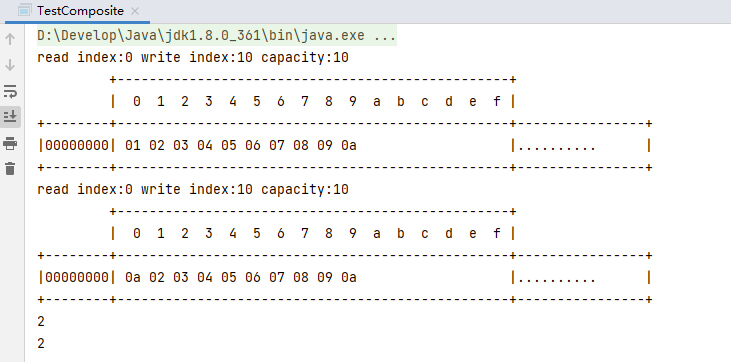
实际编写代码时,需要添加引用和手动释放
Unpooled 是一个工具类,类如其名,提供了非池化的 ByteBuf 创建、组合、复制等操作
这里仅介绍其跟【零拷贝】相关的 wrappedBuffer 方法(底层即CompositeByteBuf),可以用来包装 ByteBuf
ByteBuf buf1 = ByteBufAllocator.DEFAULT.buffer(5);
buf1.writeBytes(new byte[]{1, 2, 3, 4, 5});
ByteBuf buf2 = ByteBufAllocator.DEFAULT.buffer(5);
buf2.writeBytes(new byte[]{6, 7, 8, 9, 10});
// 当包装 ByteBuf 个数超过一个时, 底层使用了 CompositeByteBuf
ByteBuf buf3 = Unpooled.wrappedBuffer(buf1, buf2);
System.out.println(ByteBufUtil.prettyHexDump(buf3));
输出
+-------------------------------------------------+
| 0 1 2 3 4 5 6 7 8 9 a b c d e f |
+--------+-------------------------------------------------+----------------+
|00000000| 01 02 03 04 05 06 07 08 09 0a |.......... |
+--------+-------------------------------------------------+----------------+
也可以用来包装普通字节数组,底层也不会有拷贝操作
ByteBuf buf4 = Unpooled.wrappedBuffer(new byte[]{1, 2, 3}, new byte[]{4, 5, 6});
System.out.println(buf4.getClass());
System.out.println(ByteBufUtil.prettyHexDump(buf4));
输出
class io.netty.buffer.CompositeByteBuf
+-------------------------------------------------+
| 0 1 2 3 4 5 6 7 8 9 a b c d e f |
+--------+-------------------------------------------------+----------------+
|00000000| 01 02 03 04 05 06 |...... |
+--------+-------------------------------------------------+----------------+
T.buffer(5);
buf1.writeBytes(new byte[]{1, 2, 3, 4, 5});
ByteBuf buf2 = ByteBufAllocator.DEFAULT.buffer(5);
buf2.writeBytes(new byte[]{6, 7, 8, 9, 10});
// 当包装 ByteBuf 个数超过一个时, 底层使用了 CompositeByteBuf
ByteBuf buf3 = Unpooled.wrappedBuffer(buf1, buf2);
System.out.println(ByteBufUtil.prettyHexDump(buf3));
输出
+-------------------------------------------------+
| 0 1 2 3 4 5 6 7 8 9 a b c d e f |
±-------±------------------------------------------------±---------------+
|00000000| 01 02 03 04 05 06 07 08 09 0a |… |
±-------±------------------------------------------------±---------------+
也可以用来包装普通字节数组,底层也不会有拷贝操作
```java
ByteBuf buf4 = Unpooled.wrappedBuffer(new byte[]{1, 2, 3}, new byte[]{4, 5, 6});
System.out.println(buf4.getClass());
System.out.println(ByteBufUtil.prettyHexDump(buf4));
输出
class io.netty.buffer.CompositeByteBuf
+-------------------------------------------------+
| 0 1 2 3 4 5 6 7 8 9 a b c d e f |
+--------+-------------------------------------------------+----------------+
|00000000| 01 02 03 04 05 06 |...... |
+--------+-------------------------------------------------+----------------+
